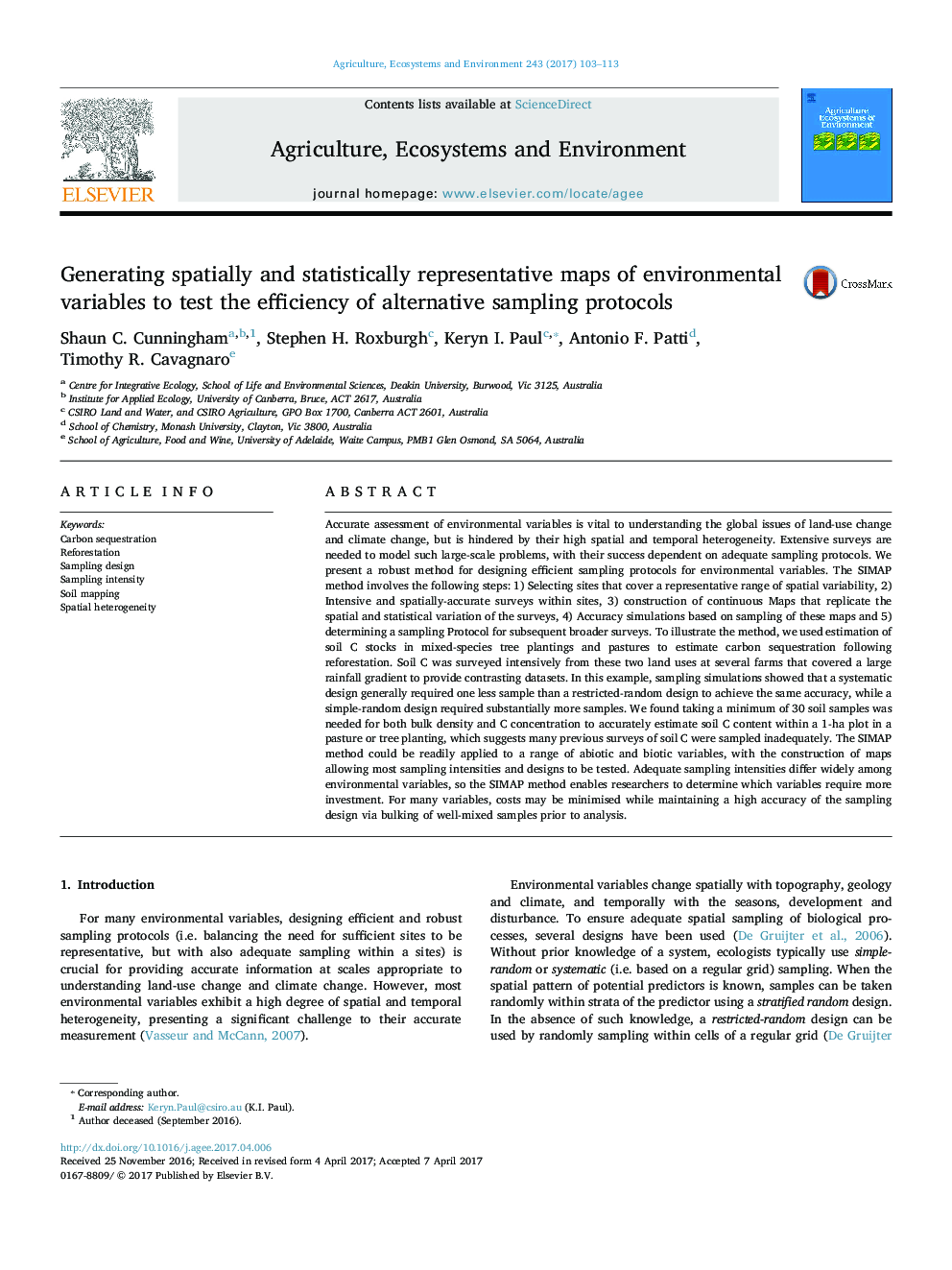| کد مقاله | کد نشریه | سال انتشار | مقاله انگلیسی | نسخه تمام متن |
|---|---|---|---|---|
| 5537833 | 1552009 | 2017 | 11 صفحه PDF | دانلود رایگان |
عنوان انگلیسی مقاله ISI
Generating spatially and statistically representative maps of environmental variables to test the efficiency of alternative sampling protocols
ترجمه فارسی عنوان
تولید نقشه های نمایشی فضایی و آماری متغیرهای محیطی برای تست کارایی پروتکل های نمونه گیری جایگزین
دانلود مقاله + سفارش ترجمه
دانلود مقاله ISI انگلیسی
رایگان برای ایرانیان
کلمات کلیدی
تداخل کربن، جنگل زدایی، طرح نمونه برداری، شدت نمونه برداری، نقشه برداری خاک، ناهمگونی فضایی،
موضوعات مرتبط
علوم زیستی و بیوفناوری
علوم کشاورزی و بیولوژیک
علوم زراعت و اصلاح نباتات
چکیده انگلیسی
Accurate assessment of environmental variables is vital to understanding the global issues of land-use change and climate change, but is hindered by their high spatial and temporal heterogeneity. Extensive surveys are needed to model such large-scale problems, with their success dependent on adequate sampling protocols. We present a robust method for designing efficient sampling protocols for environmental variables. The SIMAP method involves the following steps: 1) Selecting sites that cover a representative range of spatial variability, 2) Intensive and spatially-accurate surveys within sites, 3) construction of continuous Maps that replicate the spatial and statistical variation of the surveys, 4) Accuracy simulations based on sampling of these maps and 5) determining a sampling Protocol for subsequent broader surveys. To illustrate the method, we used estimation of soil C stocks in mixed-species tree plantings and pastures to estimate carbon sequestration following reforestation. Soil C was surveyed intensively from these two land uses at several farms that covered a large rainfall gradient to provide contrasting datasets. In this example, sampling simulations showed that a systematic design generally required one less sample than a restricted-random design to achieve the same accuracy, while a simple-random design required substantially more samples. We found taking a minimum of 30 soil samples was needed for both bulk density and C concentration to accurately estimate soil C content within a 1-ha plot in a pasture or tree planting, which suggests many previous surveys of soil C were sampled inadequately. The SIMAP method could be readily applied to a range of abiotic and biotic variables, with the construction of maps allowing most sampling intensities and designs to be tested. Adequate sampling intensities differ widely among environmental variables, so the SIMAP method enables researchers to determine which variables require more investment. For many variables, costs may be minimised while maintaining a high accuracy of the sampling design via bulking of well-mixed samples prior to analysis.
ناشر
Database: Elsevier - ScienceDirect (ساینس دایرکت)
Journal: Agriculture, Ecosystems & Environment - Volume 243, 1 June 2017, Pages 103-113
Journal: Agriculture, Ecosystems & Environment - Volume 243, 1 June 2017, Pages 103-113
نویسندگان
Shaun C. Cunningham, Stephen H. Roxburgh, Keryn I. Paul, Antonio F. Patti, Timothy R. Cavagnaro,
